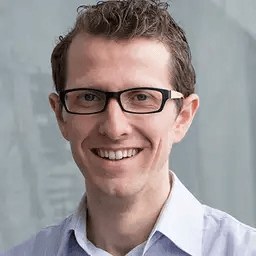From Steady SaaS to Successful Exit: Pulse CMS Sells for $55,000


Business Description
Table of Contents
Navigate through the case study sections
Executive Summary
Case Study Content
From Hard Work to Flippa Exit: The Pulse CMS Journey
Background: A No-Frills SaaS with Steady Returns
Pulse CMS wasn’t built on a pile of VC cash, or pushed into the headlines by influencer hype. It launched back in 2010, targeting designers and small agency owners who needed a simple way to let their clients edit websites. The aim was functional: create a CMS that’s simple, fast, and doesn’t get in the way. The founder, Michael Frankland, bootstrapped everything, no outside investments, no fancy offices, practically no marketing. Over eleven years Pulse CMS survived and, crucially, made a steady profit, all without a single full-time employee beyond Michael himself. Virtual assistants handled support and some admin tasks, but most growth was organic, friends-of-friends, web designers chatting in forums, and existing clients referring new customers.
Sustaining Growth Without Glamour
Pulse CMS’s model was refreshingly bland by startup standards. There was hardly any paid advertising. SEO best practices? Minimal. Still, by maintaining a focus on product stability and keeping the user interface clean, Michael kept churn extremely low, roughly 4% annually, which is rare for SaaS. Through consistency, a recurring subscription base swelled to 200+ active paying customers, yielding about $2,250 a month in profit just before the sale. For a solo developer, that’s a solid, reliable income. Most months required just several hours of oversight: ticket responses, answering questions, and releasing tweaks now and then. Pulse wasn’t scaling explosively, but it wasn’t shrinking or burning out either.
Decision to Sell: Choosing Lifestyle Over Hustle
After more than a decade running Pulse CMS, Michael made a personal decision: step away from tech, move out to the country, and dial down. This wasn’t a forced exit, no cash crisis, no angry user base. It was classic “lifestyle founder” logic: the business was running smoothly but it was time for a change. Listing Pulse CMS on Flippa made sense. Flippa’s marketplace is known for attracting serious buyers of digital businesses, especially SaaS products. But to maximize value, Michael couldn’t just post and forget. He had to show up, answer tough questions, and give prospects confidence, especially in this price range.
The Flippa Sales Process: Patience and Active Engagement
- Pulse CMS received over 22,000 visitor views on its Flippa listing.
- 57 buyers started discussions, but only 15 were truly engaged.
- These 15 asked for live walkthroughs, video calls, and direct code demos to confirm the product worked as advertised.
- Michael kept up with each, answering tickets, offering screenshares, showing revenue proofs, and never missing a scheduled call.
- Five months passed between first inquiry and closing with the ultimate buyer, who took their own time weighing options and double-checking claims.
- Throughout, Michael maintained responsive, open communication, and worked with Flippa’s marketing team to film an “Ultimate Boost” video interview that highlighted the product’s best features.
Being persistent and responsive mattered. This process didn’t end in a weekend, it took real follow-through. That’s often the overlooked reality when selling digital assets: building trust takes back-and-forth, sometimes months’ worth.
Sealing the Deal: What Helped Pulse CMS Stand Out
The buyer who eventually closed the deal had first messaged Michael almost five months earlier. That buyer wanted proof: multiple live verifications, code walkthroughs, revenue screens. Instead of pushing a hard sell, Michael waited, provided everything needed, and kept the negotiation low-pressure. By the end, the transparency and patience paid off, buyer confidence skyrocketed, and the sale completed smoothly at a $55,000 valuation, which reflected an average SaaS multiple for a business of this size.
After the Exit: Lessons and Practical Advice
- Don’t ignore buyer questions. Every buyer matters in this market, one could be your exit.
- Documentation is essential. Clear financials, clean codebase, and access logs make due diligence faster.
- Having a clear transition handover plan gives both parties peace of mind.
- Never treat digital business sales like flipping ecom products or physical goods. These take time to get right, buyers need trust and confidence.
- Flippa support helped at multiple points, smoothing negotiations and ensuring both sides felt supported through the process.
Key Factors that Drove Success
- Longevity and Profit: Over 11 productive years, Pulse CMS maintained a consistent subscriber base and stable revenue, showing real staying power.
- Transparency: Showing real usage, opening up the codebase, and always backing up revenue claims made the buyer comfortable.
- Responsiveness: Replying fast and honestly to every inquiry, even after months, kept the best buyers interested.
- Platform Support: Utilizing Flippa’s Ultimate Boost and letting their staff guide the negotiation process was a practical, not flashy, move that paid off.
If you run a small software business and want to sell, it’s not about swag or hype. Real buyers want real substance, and they’ll reward you for showing it plainly.
Would Michael Do It Again?
According to Michael Frankland: "Selling on Flippa has been amazing for me as I’ve always found strong buyers who could understand and appreciate the businesses I’ve built, and having the excellent Flippa staff support to help with negotiations, bids and after sales hand off." Building and selling digital businesses isn’t always about the fast lane. Sometimes, slow and steady is the surest way to exit profitably and move on to your next chapter, stress-free.
Real Takeaways for SaaS Founders
- Focus on product stability over rapid feature bloat. Simple, reliable software builds loyal subscribers.
- Don’t underestimate the value of documentation, accessible support, and showing long-term proof of earnings.
- Treat buyers with care, being helpful, consistent, and transparent is more powerful than aggressive negotiation tactics.
- If you want a clean exit, plan your sale as thoroughly as you run your business. Success is in the details and the follow-through.
Key Takeaways
- 1Responding quickly to every buyer inquiry, no matter how minor, builds trust and keeps serious buyers engaged throughout a long sales cycle.
- 2Growing Pulse CMS organically and focusing on customer retention resulted in a low churn rate of just 4% annually, far better than most SaaS companies.
- 3Clear documentation and financial transparency made due diligence easy for buyers and sped up the negotiation and handover process.
- 4Using Flippa's tools and engaging with their support staff at each sales stage streamlined the process and added legitimacy for the buyer.
- 5Being patient and persistent, Michael waited five months to close with his ideal buyer, showing that SaaS sales take time but patience pays off.
- 6Planning for a smooth transition and supporting the buyer post-sale helped ensure mutual confidence, making the handover seamless and stress-free.
Key Facts
Tools & Technologies Used
Premium Content Locked
Subscribe to access the tools and technologies used in this case study.
Unlock NowHow to Replicate This Success
Premium Content Locked
Subscribe to access the step-by-step replication guide for this case study.
Unlock NowInterested in Being Featured?
Share your success story with our community of entrepreneurs.
Explore More Case Studies
Discover other inspiring business success stories

How Jared Bauman Scaled His Newsletter Portfolio With A Strategic Acquisition
Jared Bauman, host of Weekend Growth and co-owner of 201 Creative, acquired The Slice newsletter to tap into a similar e...
Weekend Growth

How Jon Payne Built and Sold Two 7-Figure Online Businesses
Jon Payne studied marketing, built an SEO agency from scratch, sold it after 10 years for a low seven-figure sum, then l...
Illuminated Goods

How Two Two Serial Entrepreneurs Built and Sold Bubble 6 Figures
Building with Bubble shows how focus on organic growth, pricing ingenuity, and strategic buyer relationships can lead to...
Building with Bubble